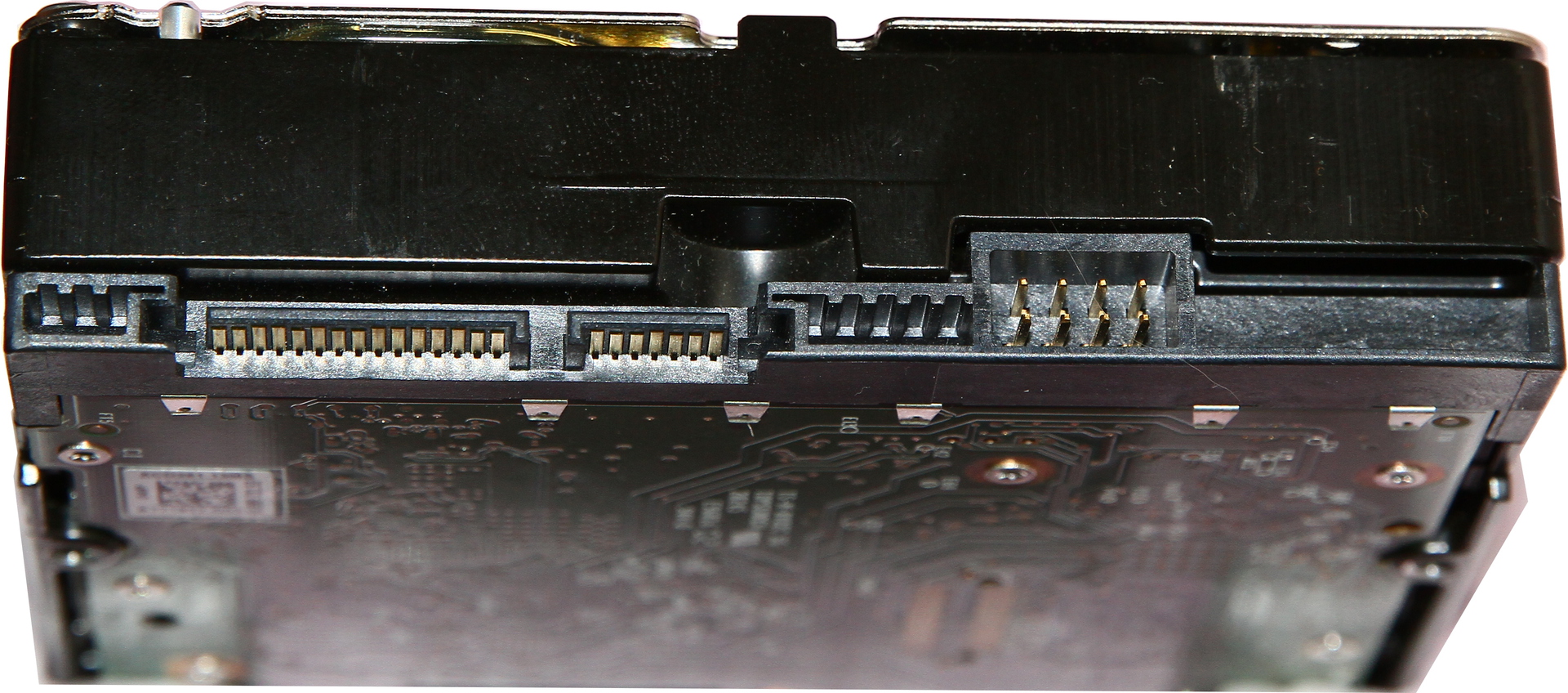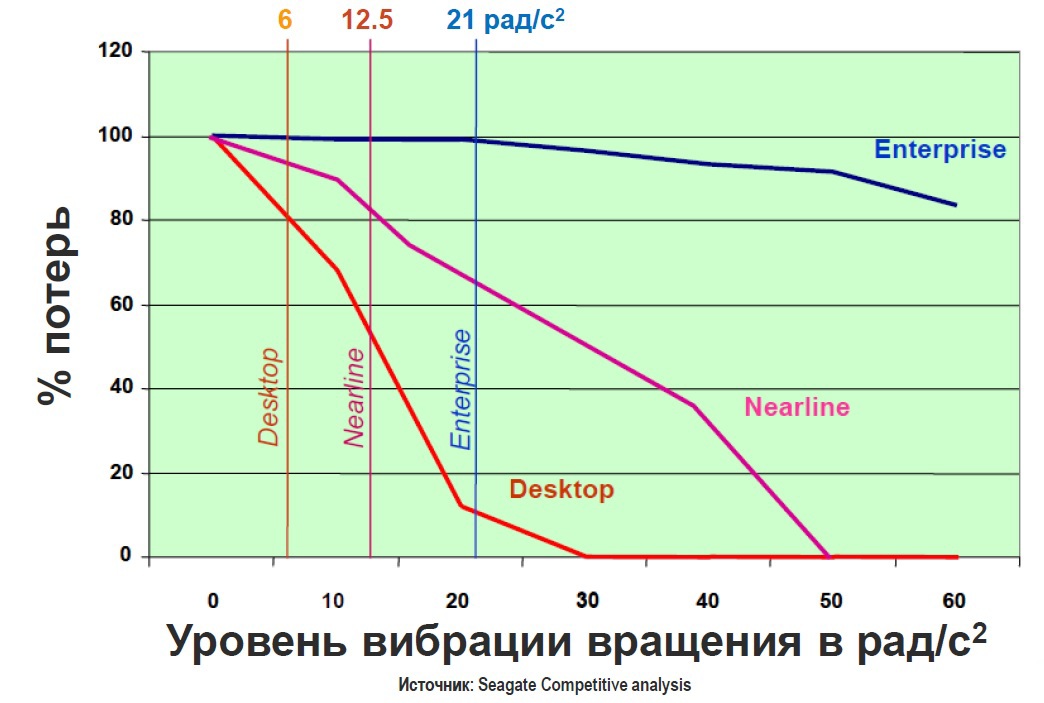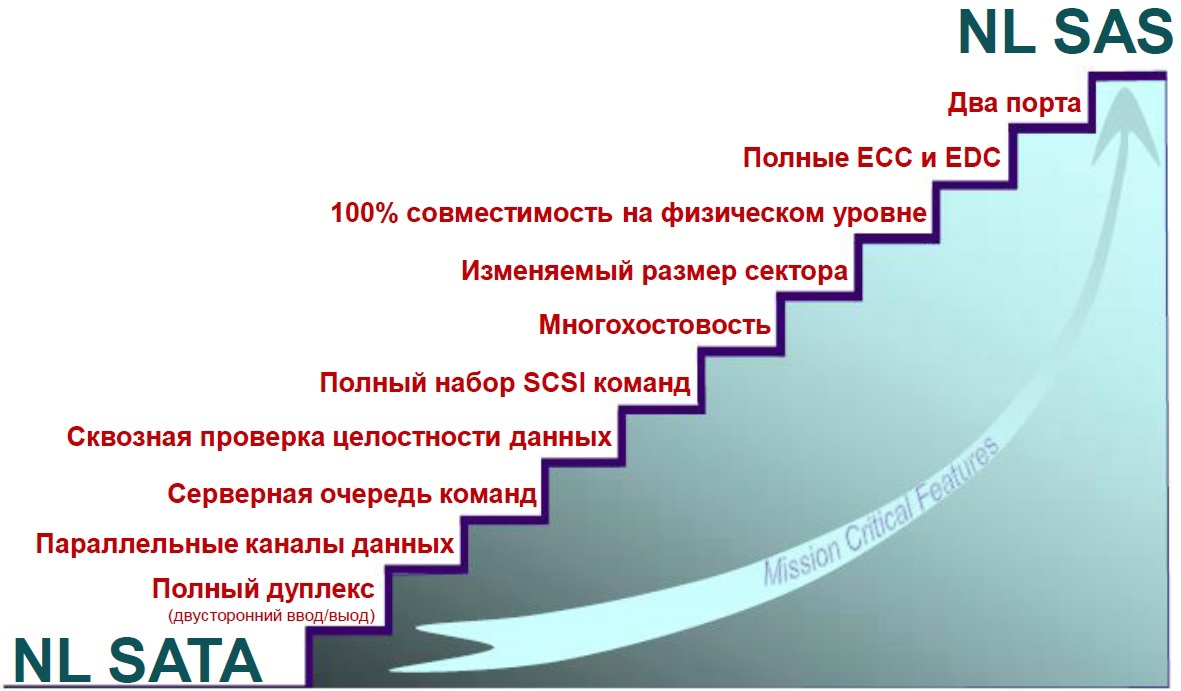Drive development

We have plans for a story about promising and interesting drives of the future, so a brief overview and a little systematization will be useful. Storage systems are a separate area that is secondary to carriers, so we will not touch it now. Strongly in the past is also not necessary, we will manage SATA / SAS from time to time, recent history, the near future and beautiful pictures with numbers.
Back in the days of IDE disks, there was a need for inexpensive, albeit slow, storage of large volume. Buffering backplanes were invented for this to support hot swapping and other crutches for working with an interface that was not designed for this. The transition to SATA made life easier for everyone - a compact golden finger connector instead of a terrible needle connector; hot-swappable support is included in the standard, cable cabling simplification, all the advantages cannot be counted.

SATA
A little later, the SAS standard appeared, which canceled the division into SCSI / SATA and unified the connection of all disks in a single connector.
')

Universal SAS Connector
For quite a long time, ordinary SATA disks were massively used, the division into desktop and corporate series did not exist yet. Unlike SCSI drives, SATA were designed to work one piece in the system and compatibility with RAID controllers left much to be desired. Manufacturers of controllers were forced to compile multipage compatibility lists with disks that became obsolete with the release of new firmware. Our production also spent a lot of effort.
SAS disks of these shortcomings were deprived, but cost (and cost) much more expensive per gigabyte of capacity.

SAS 15K
The performance was also radically different (picture taken from our SAS vs SATA article):

Test file server
Life was simplified when the first corporate discs were released. At first, they differed only in firmware and it was possible to alter the "desktop" drives, but it was already a lot - compatibility problems were an order of magnitude smaller. Now corporate series differ from the usual not only firmware, but also the element base. More reliable motors, bearings, actuators, all this significantly affects the reliability and stability of the drive.
What is the impact?
| Spindle revolutions, rpm | 5200-7200 | 7200 | 10-15K |
| Reliability (MTBF), hours | 600,000 | 1,200,000 | 1,600,000 |
| Work load | Low (<10%) | Low / Medium (<20%) | High (100%) |
| Data integrity | Parity check | EDC + (ECC) | EDC / ECC + own protection |
| Vibration resistance, rad / s2 | 6 | 12.5 | > 21 |
| Error correction | Normal for SATA | SATA + time control | Sense Keys, Codes, FRUs |
| Microcode / Functions | SATA | SATA + NL Feature Set | SCSI + advanced features (Dual processors) |
| Unrecoverable Error Level | 1 * 10 ^ -14 | 1 * 10 ^ -15 | 1 * 10 ^ -16 |
| MTBF hours per year | 2400 | 8760 | 8760 |
| Mnogohostov | not | not | 16 hosts simultaneously |
| T10 Data Protection | not | not | Yes |
Vibration resistance greatly affects disk performance:

By the way, here is a live demonstration of the effect:
The level of unrecoverable errors affects the reliability of operation in arrays. Without going into math, the 4000GB disk contains 8/25 * 10 14 bits. Rebuilding a RAID5 of 5 disks means transferring 40/25 * 10 14 bits - when using regular disks, such an error almost always occurs, and this is the collapse of the array and data loss. Corporate disks reduce this chance by an order, mission critical - by two.
At the same time, SAS disks began to spread in the 2.5 "format. In the 3.5" format, the SAS disks remained only at a spindle speed of 15K revolutions, and 2.5 "again brought the division into 10/15 K. It was decided to stop the development of 3.5" rulers, so their performance has not changed. Due to the development of technology, 2.5 "15K disks surpass the old 3.5" 15K, a few tests here: www.etegro.ru/articles/sff-compare

SAS SFF 2.5 inches
At the same time, the performance and SATA drives grew, plus drives like NL SAS, 7.2K with a different interface appeared. It seems a trifle, but with it came many functions that directly affect performance.

Difference
Performance results of modern drives:

Random Access
As you can see, the “simple” interface change gave a performance increase of up to 20%. This is not counting the normal work in the storage system, which got rid of the interposer with their added glitches.
The conclusions on disks with rotating media have not changed over many years, SAS disks are focused on speed sensitive tasks and requiring multi-threaded access:
- DBMS;
- high-loaded WEB-servers;
- ERP systems;
- systems for working with a large number of users - terminal servers, remote access servers.
SATA drives are required for tasks involving large amounts of information. Of the common problems successfully solved SATA-disks can be identified as follows:
- streaming operations, such as video encoding;
- data warehouses;
- backup systems;
- volume, but not loaded file servers.
In the following material we will raise the topic of SSD, their subspecies and unusual members of the family.
Source: https://habr.com/ru/post/217115/
All Articles